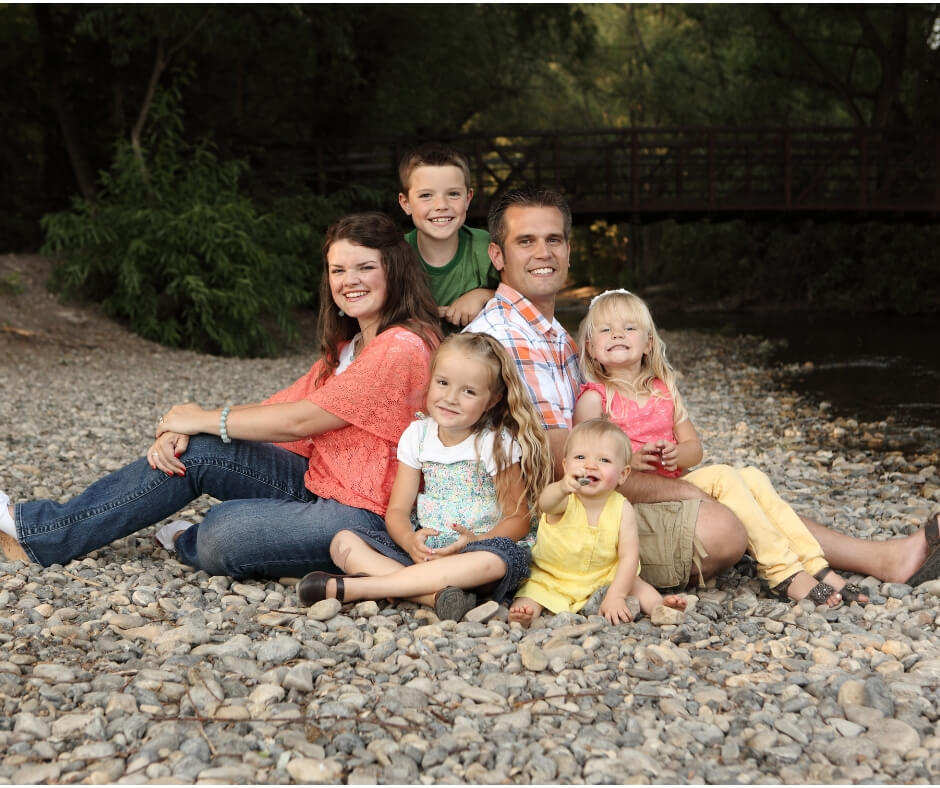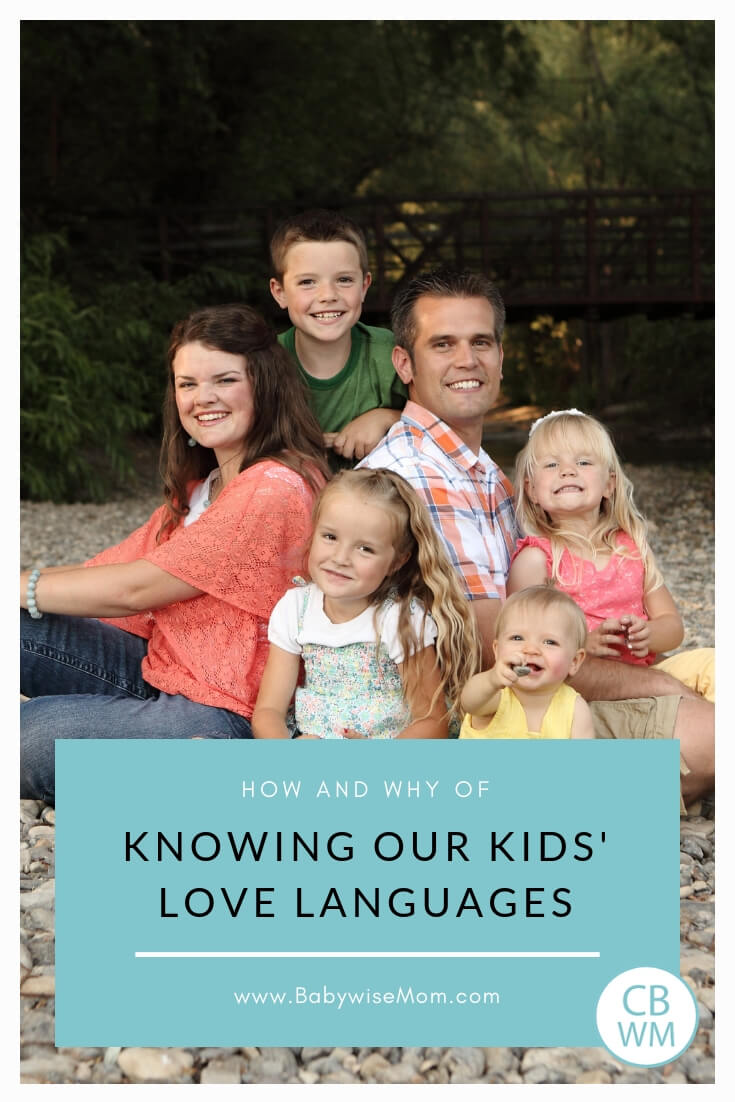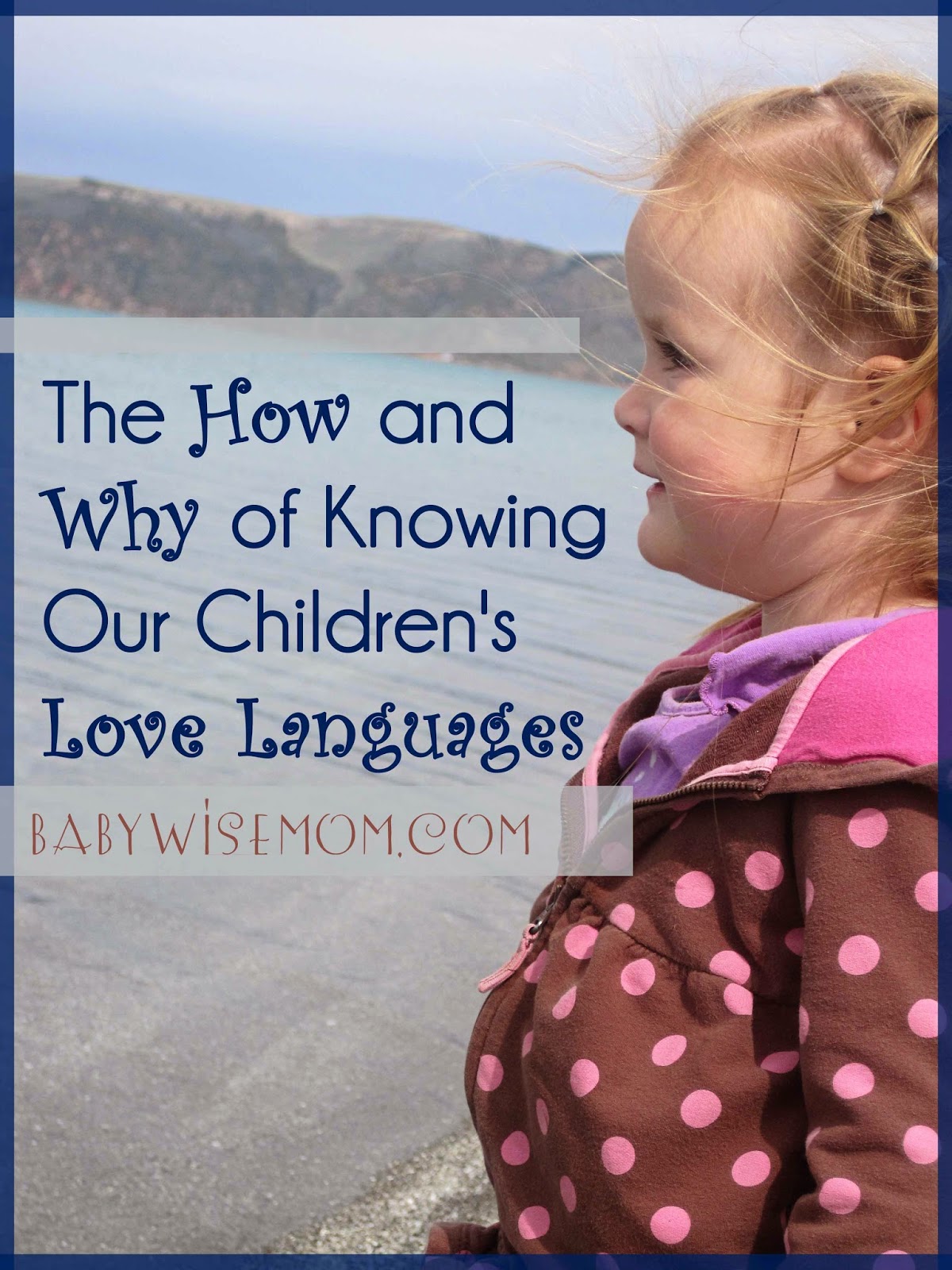The How and Why of Knowing Our Children’s Love Languages. How to figure out what your kids’ love languages are and why you should do so.

Post Contents
How to Know Your Kid’s Love Language
How: Take the Test
As I thought on what to write about, I realized that three of my children are actually old enough now to take the official “test” in the back of the book to identify Love Languages. Before they took the test, I went through on my own paper and predicted which answer I thought they would choose before they took the test. I was right on almost every question! This post may contain affiliate links which won’t change your price but will share some commission.
The test found in the book The 5 Love Languages of Children by Chapman and Campbell is a great guide to helping you know your child’s primary love language, but it definitely shouldn’t be the only thing you use. I have talked about Identifying Primary Love Language. The tips there are very helpful. Here are the problems with the test:
- The instructions are to choose what you would like your parent to say to you. Which would you rather your parent say to you. So one is “Let’s watch TV together!” or “Tag, you’re it!” Well, McKenna choose the TV one because if I am just saying it, she likes that statement better. After the test I asked if she would rather watch TV with me or play tag with me. Tag wins. So for a very literal 5 year old, the choices weren’t always put in a way that made her choose what she would actually prefer.
- A lot of the choices are one option versus receiving a gift of some sort. I don’t know about you, but my kids love gifts. Between “Wow! You did it!” and “There is a special present for you under your bed,” I think a lot of kids would go present even if gifts is not the primary love language. Although while I say that, all three of my children picked “Wow! You did it!” over the present on that specific example. So I might be wrong on this.
- It is a short test–only 20 questions long. That makes sense for young children, but I think that a longer test would be nice to help really get a full picture on what is the primary love language. Because of this, you might not get the exact results that are accurate. That is why I say to look at the other factors, as well.
How: Talk About the Results
After you have taken the test and added up the results, talk with your child about what the results said and if they feel it is true. More on that in the discussion of our results below.
How: Look At Other Factors
The authors of the book and test recognize that the test has limitations, which is why they offer a list of ways to know your child’s love language. I discuss it in Identifying Primary Love Language.
Our Results
I have always said Brayden’s is Words of Affirmation. I was correct. That is what he got as his highest and he agreed with that result. He was very close on Quality Time and Acts of Service as well. Brayden really shows his love through service, and I think most kids just love quality time (like the quote goes, children spell “love” as “time.” Time is very important and significant to children). He got zero on Physical Touch (shocking to no one) and low on Gifts. His top three were all quite close.
When we tallied up Kaitlyn’s results, her highest was Quality Time. Like I said, I think this is high for everyone, but my husband and I both think Kaitlyn is very obviously a Physical Touch person. As I was explaining quality time to her, she said, “Well, Mommy, isn’t there one that is hugs and kisses and stuff like that?” To me, that means she is Physical Touch over Quality time. Physical Touch was her second and off by one. The flaw here is that some of the physical touch things on the test are playing tag, racing, and giving a high five. Racing each other is not a way Kaitlyn feels loved. Kaitlyn is also high in gifts. This did not surprise me because she is someone who shows a lot of excitement when you give her a gift. It really doesn’t matter what it is, she is thrilled, and to me that means she appreciates it for more than simply what it is. Low for her are words of affirmation and acts of service.
McKenna’s highest is Quality Time. This is something I see as being true even knowing how high quality time is for children in general. McKenna asks to spend time with people specifically quite frequently. She is then also high on words of affirmation and acts of service. She was low on gifts and physical touch. She is only five, which is the youngest the authors recommend doing this test. I will be interested to do this again in the future. My feeling is that when she can understand the test better, she will be higher on physical touch and lower on acts of service than she is currently. Like I saisd earlier, she would rather me tell her she did a great job than tell her “Tag, you’re it,” but in practice, she would much rather play tag than me tell her great job (although I think that could be argued that is a quality time thing and not a physical touch thing).
I may be mis-reading her, however. She uses physical touch to show love, but that doesn’t mean that is how she feels it. We don’t always feel the same way we express. And it is weird to say, but when McKenna cuddles up to me, I always feel like she is sharing and giving, and conversely, when Kaitlyn cuddles with me, I always feel like she is taking. Their physical actions aren’t different; the intent seems different.
Being Multi-Lingual
I found it interesting, in a good way, that all three were very high on three types of love. I have written on Love Language: Why Be Multi-Lingual?. Our children will grow up and have a spouse and children who feel and express love in different ways, so it is great for them to have many love languages that can be tapped into.
The authors of The Five Love Language of Children really encourage parents to speak all five love languages to their children even if they know the child’s individual love language.
Why is this?
“We teach our children to love others with all of the love languages” (page 106). Okay, so if we are multi-lingual, it will teach our children to be multi-lingual.
Why do we want them to be multi-lingual?
“Thus, we will be helping them as they grow to become sensitive to the needs of others” (page 106).
So if our children are able to be multi-lingual, they will be able to be sensitive to the needs of others.
That sounds like something I want my children to be able to do. I can see this helping in friendships and family dynamics.
Later down the road, this will be helpful in marriage and helpful when they are parents themselves. And this would extend further; if they had this great love for others, they would be great contributors to society, doing much volunteer work.
Communication is vital in all areas of life. It is continually a highly ranked skill in the work force. It is invaluable in a marriage. It is essential as a parent.
This might mean you have some work ahead of you.
You probably have at least one category you are not a natural at. How are you with physical touch? What about words of affirmation? How are you at spending time with people? Having conversations? Do you make gifts special? How do you offer your acts of service? With a smile?
Look through the posts on these topics and see where you can make improvements. Set small goals and focus on one language at a time. You will have benefits all around. You will become a better communicator with family, friends, children, and best of all spouse, and you will thus show your children by example how to be a communicator in these ways.

Why Know Kid’s Love Languages
Why Know?
You may wonder why bother knowing if being multi-linqual is desirable. It is great to be able to be sure you give your child love in the primary ways. For me, physical touch is basically a zero just like Brayden is. Knowing Kaitlyn is a physical touch girl means I need to step my physical touch game up with her. She knows that I know her love language, and she knows that when I give her a kiss or a hug or when I cuddle with her on the couch, that is me making an effort to express love to her because I know it matters to her. She completely appreciates it. She recognizes my efforts and it makes her feel even better.
It is also really helpful to know so when your child is having a bad day, you know the best way to respond. If Kaitlyn had a bad day, I know a hug and some time sitting together on the couch will do more for her than me making her a treat. She would prefer my time be put into physical touch, not an act of service. If Brayden has a bad day, he isn’t going to feel comfortable and loved if I cuddle up with him on the couch, but he will if I talk it out with him or play a game with him. McKenna will prefer I play a game with her over me giving her some flowers I picked in the front yard.
There are many times in our children’s lives that they need to know firmly how much they are loved at home. The world can be harsh and lonely at times, and us knowing exactly how to reach their hearts will help us quickly show them that home is a safe place and the refuge from the storm. They will know home is the place to go when things get rough. That is where we want them to turn–not to the things the world has to offer.

See Also:
- Five Love Langauges: Children Need To Feel Love
- Love Language: Acts of Service
- The “D” Word
- Love Language: Gifts
- How Do I Love Thee?
- Love Language: Physical Touch
- Love Language: Quality Time
- Love Languages: Words of Affirmation
- Ideas for Showing Words of Affirmation
- Identifying Primary Love Language
- Speaking All Five Love Languages
- Unconditional Love
- Love Language: Why Be Multi-Lingual?
Don’t forget to check out my eBook: Babes, Tots, and Kids.
 |
Reader Comments
Annette
There is such truth in communication being vital. We not only communicate in what we say but in how know the other person will receive the message. Through our love languages we can know how the other person will perceive, receive and understand what we are communicating. What better time then now with our children to teach them this!
